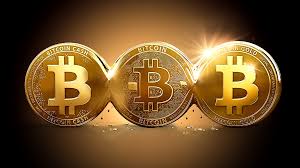Bitcoin is seeing some green during this week’s market open and appears poised to regain higher levels in the near term. The number one crypto by market cap experienced some of its worst months in history, but the bulls managed to hold the mark at around $15,500.
Now the macroeconomic outlook is changing and could support further gains for risk assets. At the time of writing, Bitcoin is trading at $17,200 with gains of 2% and 5% in the last 24 hours and seven days, respectively.

Bitcoin market returns to normal
Data from crypto derivatives exchange Deribit indicates a shift in market sentiment. Participants are more bullish on Bitcoin following the collapse of crypto exchange FTX and the fall from grace of co-founder and former CEO Sam Bankman-Fried.
This event pushed Bitcoin to a new annual low and back to 2020 levels. As shown in the chart below, the BTC Open Interest Weighted Annualized Basis shows that option contract prices were in backwardation.
In other words, options were cheaper than their underlying asset, Bitcoin, after the collapse of the FTX. The last time BTC saw a similar backwardation was in July 2021, during the second capitulation event that caused a 40% crash in the crypto market.
However, the chart shows that market sentiment and backwardation in July 2021 was far from November 2022 levels. In addition, the chart shows that the heavy selling caused by recent events is easing and the crypto market is normalizing. Deribit stated:
On July 21, the entire curve did not invert as longer-dated contracts continued to trade at a premium. However, since November 8 this year, we see the entire curve trading below the spot.

BTC’s short-term price rally is more likely
In conjunction with the above, Deribit claims BTC 25 put skew, a metric used to gauge market sentiment by looking at the demand for put (sell) option contracts, and their implied volatility is also declining. Puts were expensive during the FTX outage, but are returning to their “normal” levels. Deribit said:
A decrease in 1 Month Skew indicates that the shorter out-the-money calls are becoming more expensive relative to the out-the-money puts.
In other words, market parties buy more calling contracts (purchase contracts). These options have a short term. This way people can prepare for a Christmas or end-of-year gathering.
As NewsBTC reported, the maximum pain point, the strike price at which a large portion of the contract expires worthless, stands at $20,000.















